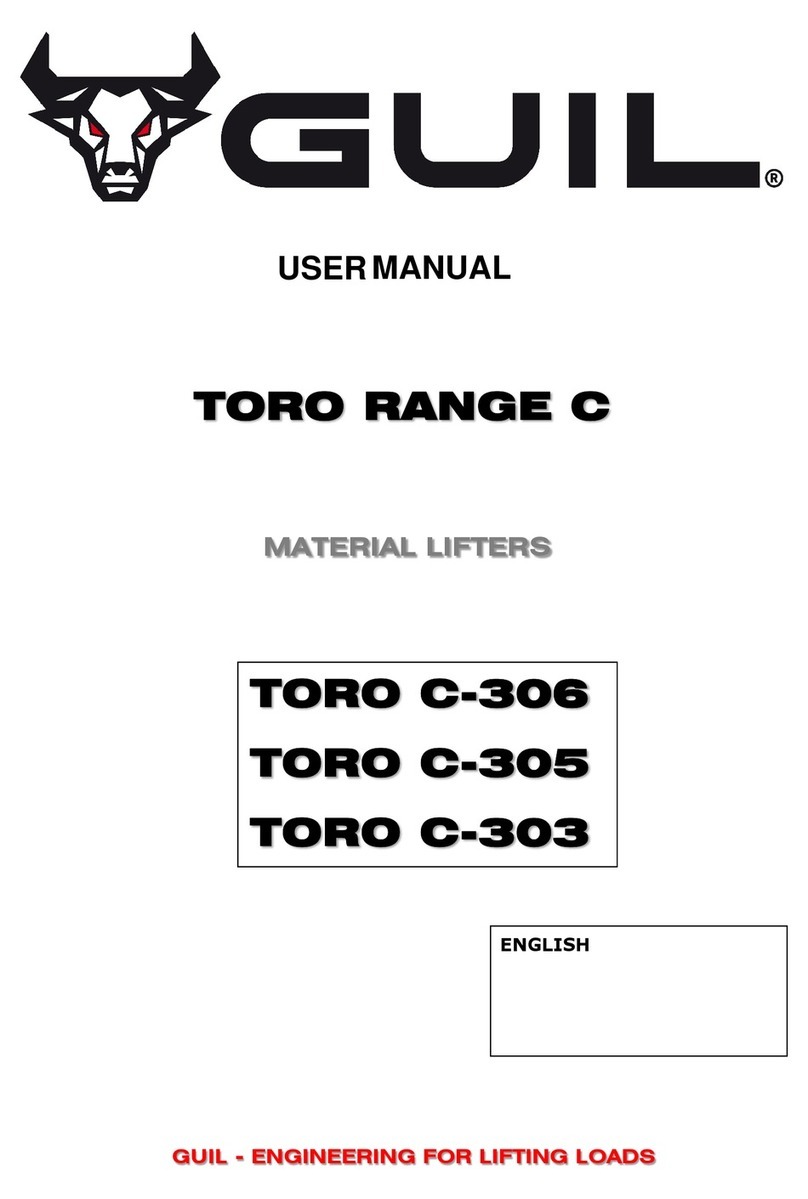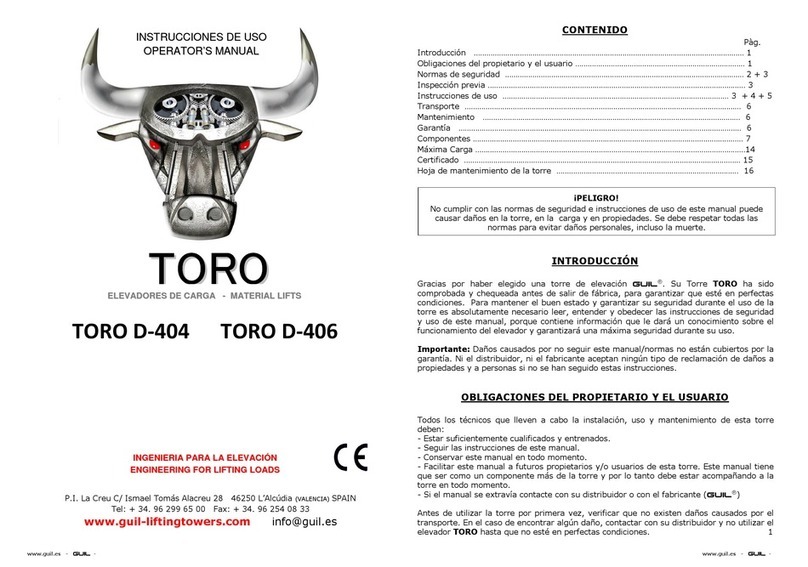
GUIL
-
TORO lifters
www.guil-lifters.com - GUIL
-
18
INTRODUCTION
Thank you for having chosen a GUIL
®
material lifter. Your TORO machine has been examined and checked
before leaving our premises to ensure it is in absolutely perfect condition. To maintain this condition and to
ensure a safe use, it is absolutely necessary for the user to read, understand and obey the safety and operating
instructions in this manual as it contains information that will give you a thorough knowledge of the workings of
your TORO lifter and guarantee maximum safety whilst operating it.
TORO lifters are manufactured using high quality components to guarantee maximum durability and safety
during its use.
Damages caused by the disregard of this user manual are not subject to warranty; neither the dealer nor the
manufacturer accepts liability for any resulting damages to property or personal injury.
Before putting the lifter into service please make sure that there is no damage caused during transportation.
Should there be any, consult your distributor or the manufacturer (GUIL
®
) and do not use the TORO lifter until
it is in prefect working condition.
The information contained in this manual is subject to change without previous notification and presents no
obligations or liability for GUIL
®
. Under no circumstances will GUIL
®
be responsible for technical or editorial
errors made here, nor for accidental or intentional, direct or indirect damages caused by following this manual
or by incomplete information in this manual. GUIL
®
will not be held responsible for any errors found in this
manual.
The information in this document is not intended to cover all possible eventualities. The user must use caution
and common sense at all times whilst using the TORO lifter. If any doubt or problem should arise do not hesitate
to contact the manufacturer GUIL
®
.
OWNER AND USER’S OBLIGATIONS
veryone involved with the installation, operation and maintenance of this lifting tower must:
-Be sufficiently qualified, trained or experienced.
-Read and understand both the winch and the lifter manual and follow the instructions given to use them
correctly.
-Keep this manual and the winch manual for the entire service life of the product.
-Pass both manuals on to every future owner or user of the tower. This manual should be regarded as a
permanent part of your lift and should remain with the lifting tower at all times.
-If either of the manuals are misplaced please contact your dealer or the manufacturer (GUIL
®
).
SAFETY RECOMMENDATIONS
Prior to set-up, be aware of and avoid the following hazardous situations:
• Drop-offs or holes which impede the lifter being levelled using only the levelling jacks.
• Pot holes, obstacles on the floor or debris.
• Slopes that exceed the adjustment capabilities of the lifter.
• Unstable or slippery surfaces.
• Hazardous locations. Aerial obstacles or overhead electric cables.
• Inadequate surface support to withstand all load forces imposed by the lifter.
• Weather conditions and strong winds.
• The presence of unauthorised personnel.






























